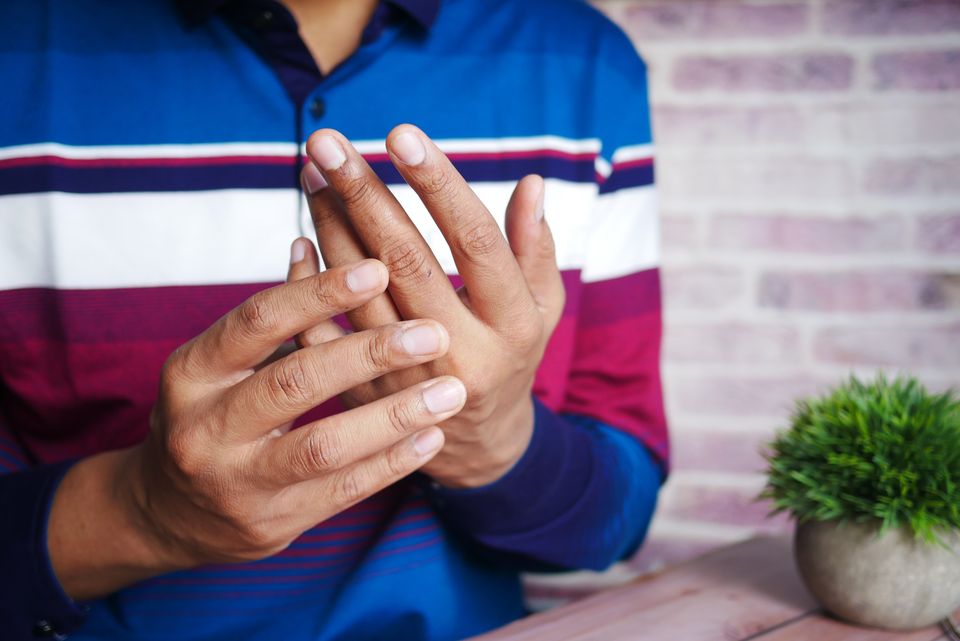Stretches to Prevent Hand and Wrist Pain

Repetitive stress injuries (RSIs), including carpal tunnel syndrome, cubital tunnel syndrome, tendonitis, and epicondylitis, build up over time from frequent keyboard and mouse use. If you're experiencing hand or wrist pain, taking breaks to stretch is one of the most effective strategies for both short term pain relief and preventing a more serious chronic pain condition from developing. Keep in mind that not all stretches are equally beneficial, and it's important to know the best timing, frequency, and technique for stretches to prevent and reverse injury.
If you’re a computer user, taking breaks does not necessarily mean interrupting your flow or dropping work. You can still use the computer without further injury by using a voice-control tool such as LipSurf, even while you stretch. Make a habit of taking “hand breaks” that involve switching to voice-control while stretching to make the most of your time.
How often you should stretch depends on your particular condition. It's important to build up to regular stretching gradually so you don't aggravate your pain. If your condition is serious you might do just one stretch repetition once per day at first, working up to more sets and reps safely over time. Once you have built up to this, you should determine how often you need to stretch to counterbalance the damage from repetitive motion. If you are constantly doing repetitive motions for work, you will need more frequent stretch breaks. You should also stretch proactively at the beginning of each day before you have aggravated the pain. Try setting an alarm to remind yourself.
Good stretching technique is crucial to prevention, improvement, and safety. Wrist pain results from compression of the median nerve, which runs from your neck all the way down through your upper arm, elbow, and forearm, and ultimately through the wrist and into the thumb. Near your elbow, the ulnar nerve passes through the cubital tunnel, down through your wrist, and into the pinky and ring finger. These nerves are aggravated over time from resting your wrist or elbow on a hard surface like your desk or keyboard, while doing repetitive tasks like typing or mouse use. The constant pressure causes the tendons within the tunnel to swell, narrowing the tunnel surrounding the nerve and putting pressure on the nerve, while also reducing blood flow. When the nerve is aggravated, it can't move easily through the tunnel, resulting in pain, tingling, or numbness in the wrist or fingers.
Nerve Glides are one of the simplest and most effective exercises to help the median and ulnar nerves glide smoothly on their path from your neck to your fingers. It’s important to note that the general technique for nerve glides is unlike stretching, in that you should hardly be feeling a stretch when you’re doing them properly. These videos by Bob and Brad (the most famous physical therapists on the internet!) go into more detail on proper nerve glide technique, and explain how to determine a safe frequency for stretching.
Median nerve glides help relieve pain coming from the Carpal Tunnel:
Ulnar nerve glides help relieve pain coming from the Cubital Tunnel:
As always, make sure to visit your doctor for a diagnosis and safe treatment plan.
Sources:
Butler, S.J. (1996). Conquering Carpal Tunnel Syndrome. New Harbinger Publications: Oakland, CA.
Fowler, J.R. (2019). Cubital Tunnel Syndrome: Diagnosis, Management, and Rehabilitation. Springer: Cham, Switzerland.
MayoClinic.org. (n.d.) Carpal Tunnel Syndrome. https://www.mayoclinic.org/diseases-conditions/carpal-tunnel-syndrome/symptoms-causes/syc-20355603
ClevelandClinic.org. (n.d.) Cubital Tunnel Syndrome. https://my.clevelandclinic.org/health/diseases/21997-cubital-tunnel-syndrome



